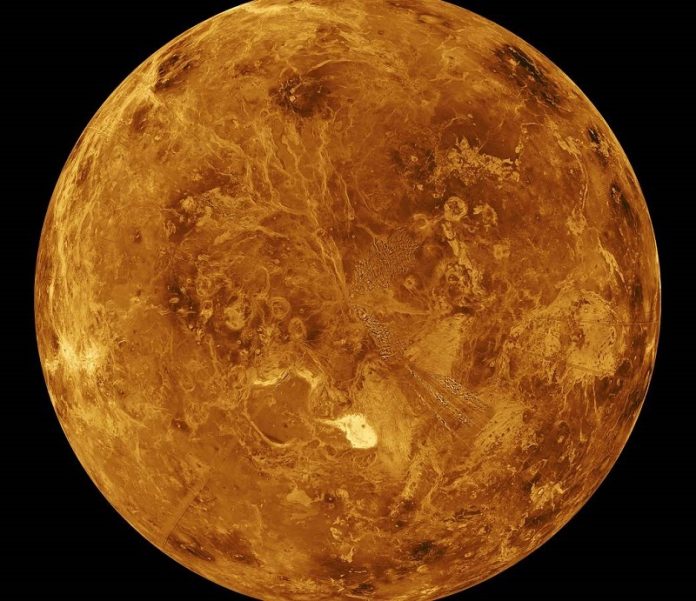
Venus is about 4.5 billion years old, but looks much younger.
A high-energy, rejuvenating boost it received in its earliest years may explain its youthful appearance, researchers report.
For decades, the relatively unblemished surface of Venus has distinguished it from nearby planets and moons, including Earth.
Mars, for instance, and Earth’s moon, bear the craggy scars and craters from the bombardment of bolides—bright meteors that hit the surface as fireballs—over billions of years.
Earth’s surface appearance, by contrast, benefits from its system of plate tectonics that “recycles” the surface of the planet on a regular basis.
Venus does not have plate tectonics. Even still, despite being about 4.5 billion years old, it has the outward appearance of a much younger planet; its surface age is only 500 million years.
“We would expect Venus to be heavily cratered, but surprisingly, it is much less cratered than the moon or Mars,” says Jun Korenaga, a professor of earth and planetary sciences at Yale University and coauthor of the new study in Nature Astronomy.
“Many scientists have tried to explain this young surface age of Venus,” Korenaga says. “One popular idea is that Venus used to have plate tectonics, but somehow it stopped about 500 million years ago.
This explanation is admittedly ad hoc, so others have tried to come up with models that are physically more sound, with limited success.”
Korenaga, working with lead author Simone Marchi and coauthor Raluca Rufu of the Southwest Research Institute in Boulder, Colorado, believe they have solved the mystery.
In their study, they consider the idea that Venus systematically experienced more powerful bolide impacts than Earth did, particularly in the early years of the solar system, about 4.5 billion years ago.
During that period, Korenaga says, the rate and magnitude of bolide bombardments were quite high because an abundance of leftover planetary building material remaining in space. As time went by, the intensity of bombardments declined.
Earth and Venus formed in the same neighborhood of the solar system as solid materials collided with each other and gradually combined to form the two rocky planets.
The slight differences in the planets’ distances from the sun changed their impact histories, particularly the number and outcome of these events.
“One of the mysteries of the inner solar system is that, despite their similar size and bulk density, Earth and Venus operate in strikingly different ways, particularly affecting the processes that move materials through a planet,” Marchi says.
After running simulations of more systematic bolide impacts, the researchers noticed an intriguing trend: more impacts blasting deeper into Venus led to a superheating of the planet’s core.
“This superheated core could have a long-lasting influence on the volcanic history of Venus,” Korenaga says. “It could keep heating up the mantle for a few billion years, with sufficient volcanic activity to cover up most of the craters and reduce the apparent surface age to only a few hundred million years.”
The researchers note that two upcoming NASA space missions to Venus—VERITAS and DAVINCI—and well as the planned European mission EnVISION, are expected to provide new, high-resolution data on the tectonic and bolide impact history of Venus.
“We will be able to test various predictions from our hypothesis, based on this data,” Korenaga says.
Follow us on Twitter for more articles about this topic.



